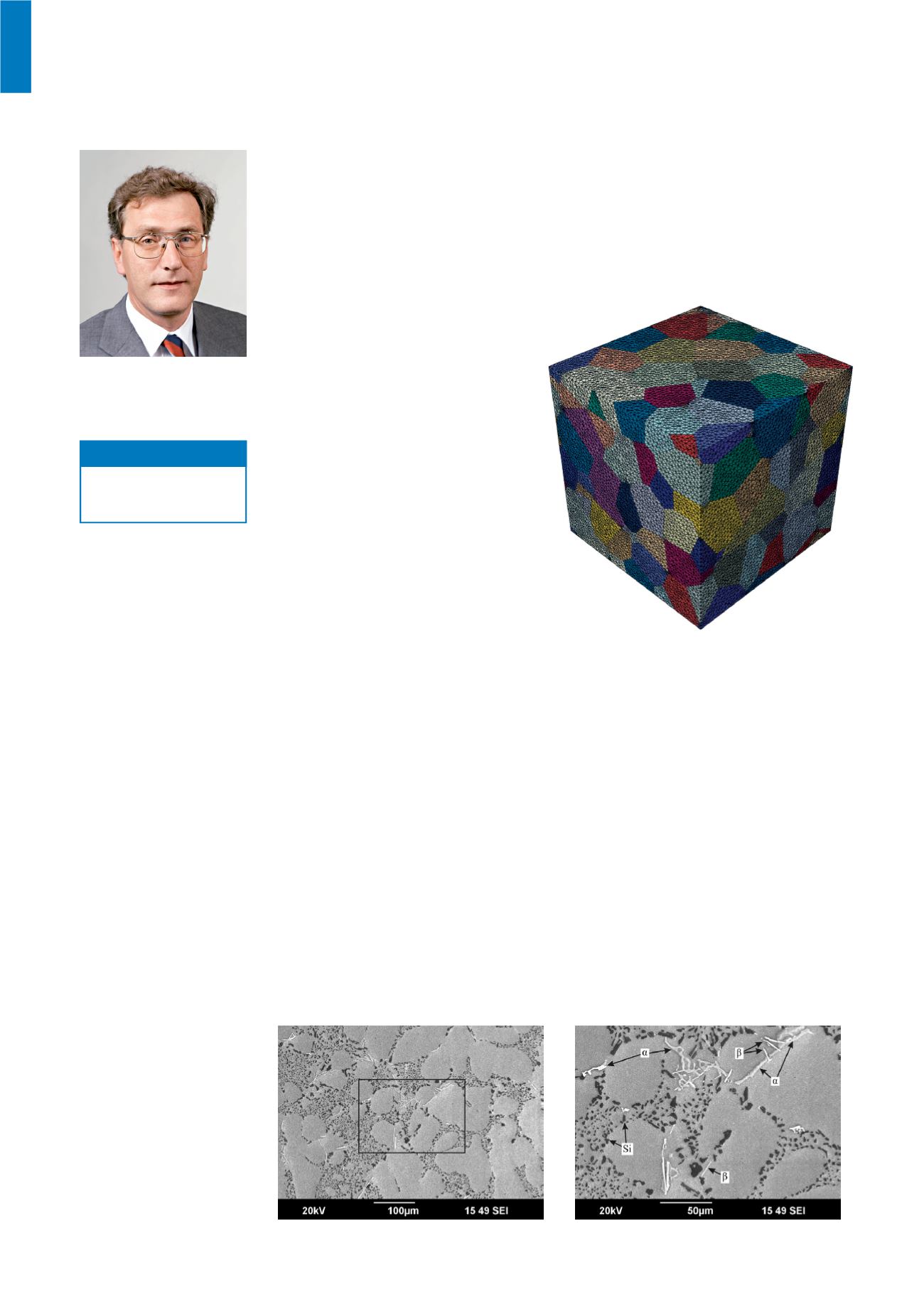

312
Materials Science and Mechanics of Materials
Materials Science and Mechanics of Materials
Experimental and theoretical characterization of metallic materials
Prof. Dr. mont. habil.
Dr. rer. nat. h. c.
Ewald Werner
n
For many decades technological advances are closely linked to the
availability of appropriate materials. The Institute of Materials Science and
Mechanics of Materials concentrates on processing – microstructure –
(mechanical) properties – relationships of load bearing metallic materials
such as high strength steels, titanium, nickel, aluminum and tungsten alloys.
Research is performed employing theoretical, numerical and experimental
techniques with equal importance on multiple length scales. The associ-
ated State Material Testing Laboratory serves as
an important interface to industry with
respect to research-oriented (off
routine) testing of materials.
In 2016 research activities were directed
toward plasticity and failure of gas turbine
sealing systems, hot isostatic pressing
of aluminum alloys in combination with
precipitation hardening, the importance
of thermo-physical properties of tool steel
materials as used in press-hardening
of ultrahigh-strength steel sheets and
aspects of strain localization during
forming of sheet materials. Much effort
is devoted to fundamental research in
electrochemistry related to basic problems
in electrochemical machining and last but
not least to reliability aspects of integrated
circuits.
Combined Hot Isostatic Pressing and Heat Treatment of
Aluminum Cast Alloys
Heat treated aluminum cast alloys have
multiple applications in the automotive
and aeronautical industries. In the field of
aircraft applications, high demands on the
fatigue resistance lead to the necessity of
a special production route that ensures
high component quality. Hot isostatic
pressing (HIP) is commonly used to reduce
casting porosity of cast material, thereby
www.wkm.mw.tum.de post@wkm.mw.tum.dePhone +49.89.289.15247
Contact
Three-dimensional model of a polycrystalline micro-
mechanical, periodic unit cell used in finite-element
calculations of local material properties. The structure
shown contains roughly 100 grains that differ in
crystallographic orientation. (Source: WKM)
significantly increasing the material’s
fatigue resistance. For the aluminum cast
alloy A356 (Al + 7 % Si + 0,3 % Mg) this
is usually done in a separate process step
preceding the regular heat treatment,
which comprises solution annealing and
aging. Solution annealing followed by
rapid cooling results in an oversaturated
condition with magnesium and silicon
Microstructure of the aluminum
cast alloy A356 in hot isostatic
pressed condition. The alloy
shows eutectic silicon (Si) and
different intermetallic compounds
like plates of
β
-phase (FeSiAl5)
and
α
-phase ((Cr, Fe)4Si4Al13) in
a matrix of aluminum.


















